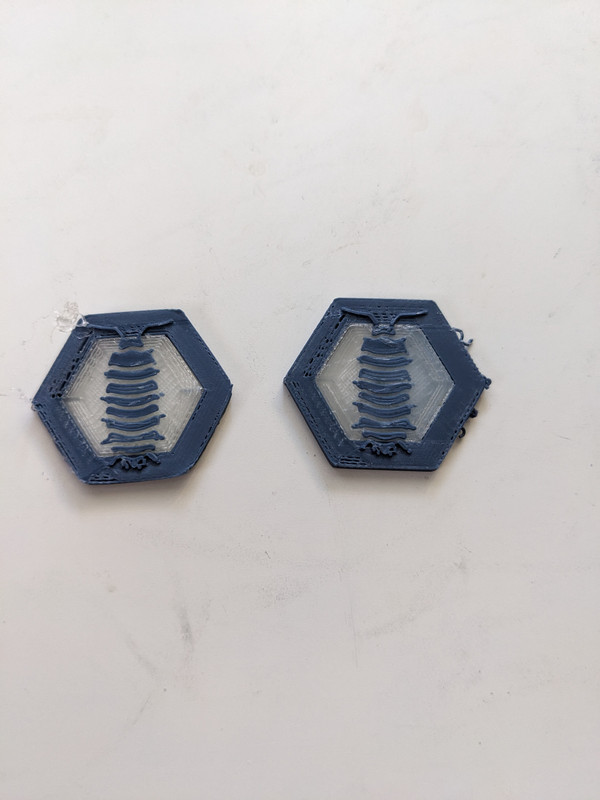- cross-posted to:
- 3dprinting@lemmy.ml
- cross-posted to:
- 3dprinting@lemmy.ml
The main thing I’m not sure about is the gaps on top and the globs and strings on the top and sides. I think the gaps on the bottom might be needing to level the bed and extruders better, and maybe I need to try a raft for the warping?
I’m using a flashforge creator pro with a glass print bed and layerneer bed weld, happy to fill in any other details too. I’m new to 3d printing so I’m not really sure what all the necessary details might be needed to figure out the problem
The second photo looks like there is some underextrusion involved too.
The third photo is the bottom, right? It sounds like you’ve made the correct conclusion, that you need to calibrate the nozzle-bed distance better. Especially the dark filament looks like it was printed while the nozzle was too far from the bed. However I don’t know how you adjust this distance on your printer. On a normal printer with a single nozzle and no probe you would do this by levelling the bed at a different height. On a printer with probe you adjust the “probe z offset” setting in firmware. But since you have dual nozzles there’s probably some kind of calibration/levelling procedure specific to your printer that you need to follow. The transparent filament looks like it was printed at a better distance.
I would suggest that you try to improve the first layer before tackling the issues higher up.
Yeah I agree, Id say your white filament has good squish and blue one doesnt. I have 0 experience with dual extruder setup tho. If you are printing PLA glass bed is good
And avoid raft whenever possible imo
Id look at mouse ears as a replacement if you need to stop the parts from warping
I have very little experience (6 prints so far on an ender 3).
When is the last time you’ve leveled your bed?
I had a similar tubing issue (no idea what the term is) where there would just be random tubes off the objects body.
I manually leveled and printed again and the print came out fine.
Good luck
No worries, there are a few more detaila that will help us to help you.
You mentioned what printer you’re using but we also need your settings, what slicer you used, the type of plastic, and what the model is supposed to look like.
For what the model is supposed to look like a screenshot (or a few) of what it looks like in 3d builder, your slicer, etc is usually what we’ll need.
Oh, and scale helps a lot. In the pictures you provided it’s hard to tell how big the items are.
It could be any number of reasons from the bed, to filament quality, to too fine of details you’re trying to reproduce with printer.





